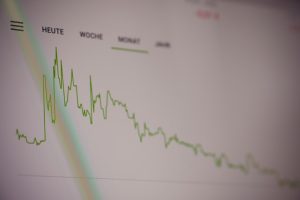As a forex trader, you may be familiar with the concept of using indicators to help you make informed trading decisions. Forex indicators are tools that are used to analyze market data and provide insights into market trends and price movements. Setting up forex indicators is relatively easy, but requires an understanding of how they work and how to apply them to your trading strategy. In this article, we will explain how to set up a forex indicator step-by-step.
Step 1: Choose an Indicator
The first step in setting up a forex indicator is to choose the right one for your trading strategy. There are many different types of forex indicators available, each with its own set of features and benefits. Some of the most popular forex indicators include Moving Averages, Relative Strength Index (RSI), Fibonacci Retracements, and Bollinger Bands.
Before selecting an indicator, it is important to understand what it does and how it can assist you in your trading. Research the various types of indicators to determine which one is best suited to your trading style and goals.
Step 2: Install the Indicator
Once you have chosen an indicator, the next step is to install it onto your trading platform. Most trading platforms, such as MetaTrader 4 (MT4) and TradingView, have a wide range of indicators available for download.
To install an indicator on MT4, follow these simple steps:
1. Open the MT4 trading platform and login to your account.
2. Click on “Insert” in the top menu bar and select “Indicators”.
3. Choose the indicator you want to install from the list and click “OK”.
4. Adjust the settings of the indicator to your preferences, if necessary, and click “OK”.
Your indicator should now be visible on your trading platform.
Step 3: Configure the Settings
After installing the indicator, you will need to configure the settings to suit your trading strategy. Most indicators have default settings that can be adjusted to fit your needs.
For example, if you are using the Moving Average indicator, you can adjust the period length to determine the length of the moving average. The default setting is usually 20, but you can adjust this to a shorter or longer period depending on your trading strategy.
Similarly, if you are using the RSI indicator, you can adjust the overbought and oversold levels to suit your trading style.
Step 4: Apply the Indicator to a Chart
Once you have configured the settings of your indicator, you will need to apply it to a chart. To do this, simply drag and drop the indicator onto the chart you want to analyze.
For example, if you are using the Moving Average indicator to analyze the EUR/USD currency pair, you would drag and drop the indicator onto the EUR/USD chart.
Step 5: Interpret the Indicator
After applying the indicator to a chart, it is important to understand how to interpret the data it provides. Most indicators display data in the form of lines or bars, which can be used to identify trends and potential trading opportunities.
For example, the Moving Average indicator displays a line on the chart that represents the average price of a currency pair over a specified period. If the price of a currency pair is above the moving average line, it is considered to be in an uptrend. If the price is below the moving average line, it is considered to be in a downtrend.
Similarly, the RSI indicator displays a line on the chart that determines whether a currency pair is overbought or oversold. If the RSI line is above 70, the currency pair is considered to be overbought and may be due for a correction. If the RSI line is below 30, the currency pair is considered to be oversold and may be due for a rebound.
Conclusion
Setting up a forex indicator is a relatively straightforward process that can be done in just a few steps. The key to success is to choose the right indicator for your trading style and goals, and to configure the settings to your preferences. With a solid understanding of how to set up forex indicators, you can use these powerful tools to improve your trading performance and achieve greater success in the forex market.





